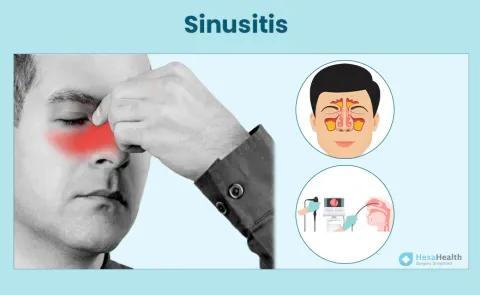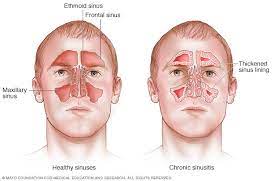Diagnosis
When you visit your ENT specialist, they will ask several questions to develop a complete medical history and learn about your symptoms. The ENT specialist will then conduct a physical examination and suggest laboratory and imaging tests.
Physical examination:
- During the physical exam, your ENT specialist will look for any swelling, blockage or drainage in your ears, nose, and throat.
- Your ENT specialist may use a thin, illuminated video camera (nasal endoscope) that is passed through the nostril hole. The endoscope allows the ENT specialist to view the nose and sinuses, thereby identifying polyps (a small growth protruding from a mucous membrane) or swelling.
- Laboratory tests: Laboratory tests might provide extra diagnostic information in acute or chronic sinusitis patients. The results of these tests might suggest the presence of an underlying disease.
- Nasal cytology (study of the fluid from the nasal mucosa)
- Nasal-sinus biopsy (removing a small amount of tissue to examine under a microscope)
Tests for immunodeficiency.
Imaging studies: When symptoms are ambiguous, physical test results are unclear, or clinical disease continues despite effective medical therapy, imaging tools can give confirming evidence. These studies include:
Ultrasonography: This procedure has lesser use but can be used in pregnant women to determine the amount of sinus secretions that are retained.
Radiographs: While standard radiographs may be used to identify acute sinusitis, they are not so sensitive.
Magnetic resonance imaging (MRI): It is a sensitive approach for detecting suspected fungal sinusitis and distinguishing between inflammation and malignant (cancerous) tumours.
To diagnose chronic sinusitis fully, your ENT specialist would also need to see polyps, pus, or thickened mucus in the nose or recommend a computed tomography (CT) scan.
Diagnostic procedure
Rhino laryngoscopy: It provides a direct view of abnormalities of the septum (cartilage in the nose that separates the nostrils), turbinates (tissue within the nasal passageways), and nasopharynx (a part of the pharynx behind the nose). This procedure also helps to view the posterior tongue, epiglottis (a lid just above the pharynx), glottis (a part of the larynx), and vocal cords.[11]




























